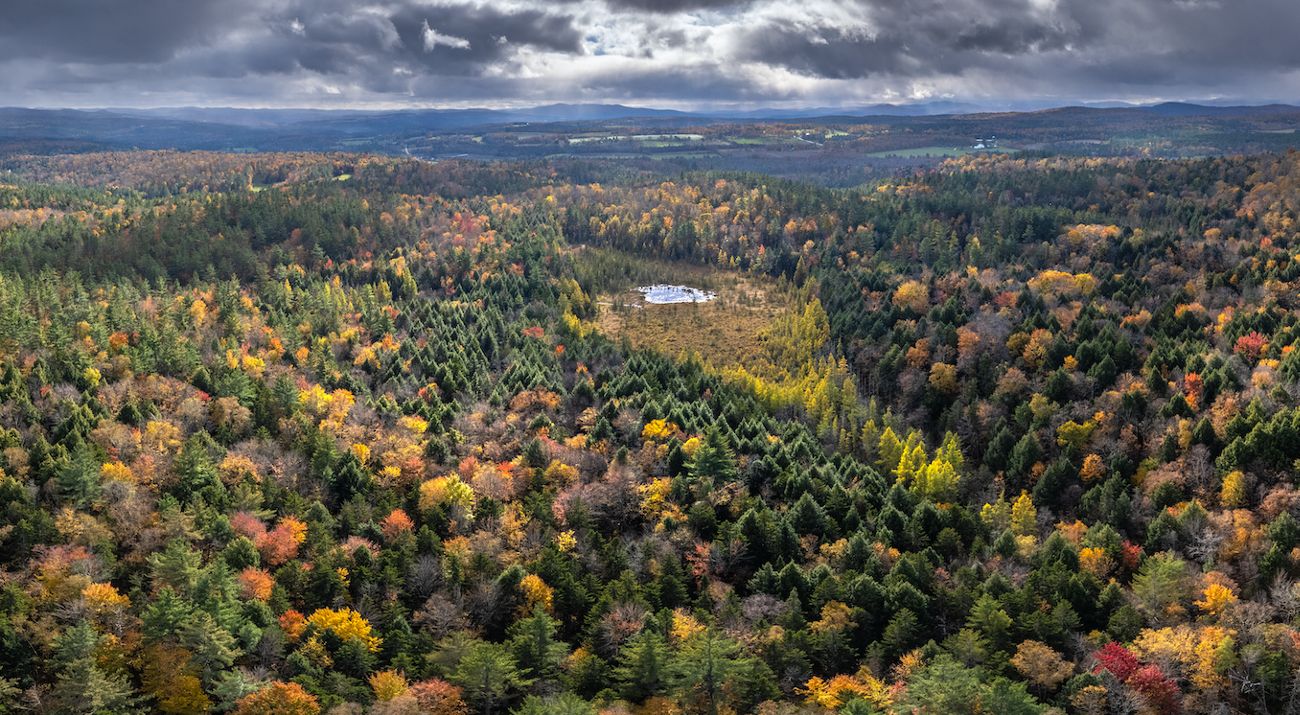Vermont Biodiversity Protection Fund
Conserving Critical Landscapes for Habitat and Climate Resilience

Vermont is the crossroads for wildlife movement in the northern Appalachian Mountains. Our forests and rivers provide critical landscape corridors connecting habitats of southern New England and New York to the northern forests of New Hampshire, Maine and Quebec. Wildlife and plants are already adapting to climate change, shifting their ranges northward by 11 miles and upward in elevation by 33 feet each decade. Recognizing the need to protect biodiversity, the State of Vermont has established goals for protecting 30% of the state by 2030 and 50% by 2050, via Act 59, Vermont’s Community Resilience and Biodiversity Protection Law. TNC is dedicated to protecting lands and waters to allow for species movement as our climate changes and helping Vermont meet its ambitious biodiversity protection goals.
We find ourselves in an “all-hands-on-nature” moment. Recognizing the scope and scale of the shared work ahead, TNC is looking for partners to help protect the places that will maintain regional connectivity and grow Vermont’s climate resilience through the creation of our new Vermont Biodiversity Protection Fund. With grants available to non-profits, municipalities and state agencies for land acquisition and conservation easement projects that protect biologically diverse and climate-resilient lands, we hope to move the biodiversity protection needle, together. 2025 is the pilot year for this new TNC Vermont program. Stay tuned for additional information on the program following the fall 2025 funding round.
Vermont's Focal Areas
Vermont’s role as a regional connectivity corridor is most at threat in five critical landscapes (TNC “Focal Areas”), which require concerted and coordinated protection to maintain connectivity across state lines and prevent fragmentation. These are the Focal Areas in Vermont.
View a detailed GIS map to see the specific places we're targeting.
Green Mountains to Adirondacks
The Greens to Adirondacks Focal Area is ecologically and topographically one of the most diverse in Vermont and is also the only remaining ecologically viable connection between the Green Mountains of Vermont and Adirondacks of New York.

Southern Green Mountains to White Mountains
The Southern Greens to Whites Focal Area encompasses large, contiguous blocks of intact northern hardwood/mixed hardwood-softwood forest as well as critical pinch points where the landscape crosses major highways and the mainstem of the Connecticut River.

Worcester Range to Northeast Kingdom
The Worcester Range to Northeast Kingdom Focal Area is home to fantastic, wild spaces like the Nulhegan Basin, Lake Willoughby, Green River and Waterbury Reservoirs, but it is also one of our most threatened landscapes, with only a few, critical-yet-tenuous connections left.

Berkshire Wildlife Linkage
The Berkshire Wildlife Linkage includes the most intact forest ecosystems across southern New England and into Vermont, and some of its highest carbon stocks.

Northern Mountains and Headwaters
The Northern Mountains and Headwaters Focal Area connects Vermont to Northern Maine and includes a rich diversity of ecosystems, from alpine tundra and subalpine forests, to diverse wetlands and floodplains.

Grants will support projects that fall within TNC’s Resilient and Connected Network of lands, with preference given to projects in the five Focal Areas.

The Vermont Biodiversity Protection Fund
TNC Vermont is awarding up to a total of $1,000,000 in grant funding in 2025 to organizations seeking to complete land protection projects in TNC’s Resilient and Connected Network in Vermont, with a preference given to projects in the five Focal Areas. The first round of VBPF in spring 2025 awarded funding to seven conservation projects totaling nearly 2,500 acres across Vermont. Applicants can apply for up to $100,000 per project and are limited to two projects per year. However, larger projects may be considered on a case-by-case basis.
Grants will be awarded for projects that:
- Are forested parcels (majority of parcel in forest cover or returning to forest)
- Are in TNC Vermont’s Resilient and Connected Network, with preference given to the five Focal Areas and further prioritization of projects in the Vermont portions of the Southern Greens to Whites and Greens to Adirondacks
- Are scheduled to close within 12-18 months of grant approval
- Include a robust long-term stewardship plan and capacity
Preference will be given for projects that:
- Include freshwater and equity benefits
- Provide matching funds from many sources, including the Vermont Housing and Conservation Board’s Working Forest Fund and Natural Areas Fund, private gifts, bargain sales and land donations.
- Are from LTA accredited (or member) organizations or those with demonstrated capabilities and track record of success
Up to 10% of the funds can be used for staff time and overhead.
Eligible organizations:
- Land Trusts
- Municipalities
- State Agencies
All grantees will be required to work with TNC on public announcements highlighting the biodiversity benefits of the project and climate resilience, and TNC’s funding for the program.

How to Apply
Applicants should email Jon Binhammer, TNC Vermont Real Estate Transaction Director, prior to submitting an application to ensure their project is feasible before developing a proposal.
Jon Binhammer: jbinhammer@tnc.org
Help Us Protect Vermont’s Biodiversity
Sign up to receive monthly conservation news and updates from Vermont.

